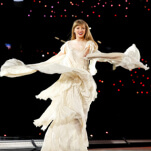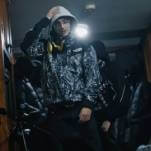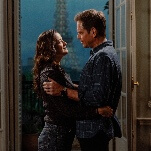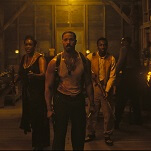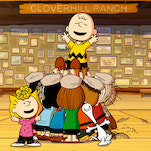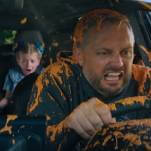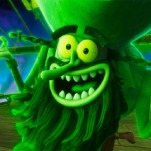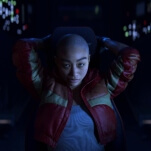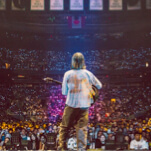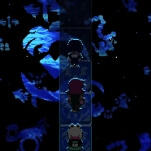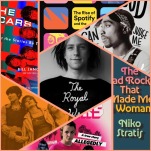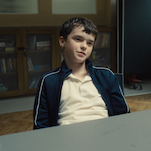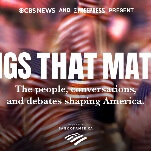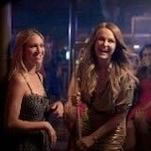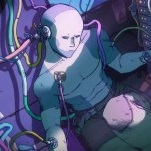The best comics of 2011: Superhero and mainstream
Superheroes flooded movie screens, publishers transitioned to digital, and entire lines were rebooted in 2011, a turning point for the comic-book industry. The year started with Marvel and DC struggling to hold on to readers, with rising prices and event fatigue forcing drastic measures that significantly changed the second half of 2011. The DC relaunch, combined with Marvel’s restructuring of its mutant, street-level, and Ultimate titles, has resulted in higher-quality superhero comics, while Image Comics has risen as the patron publisher for creator-owned titles. Digital comics are changing the way comics are bought and read, and by the end of this year, all of the major publishers will have switched to day-and-date digital release for their libraries. It’s the dawn of the digital age of comic books, and 2012 will be the test of how well companies are able to adapt to this new frontier. Here are The A.V. Club’s picks for the top superhero and mainstream comic books of a landmark year.
1. Criminal: Last Of The Innocents (Icon/Marvel)
Writer Ed Brubaker and artist Sean Philips have earned a place among the classic partnerships in comic books. The most recent story in the Criminal series follows Riley Richards as he returns home for his father’s funeral, a trip that triggers a wave of nostalgia that manifests in the form of Archie-like comic strips with an adult twist. It’s a brilliant device that uses readers’ connections to classic comics to intensify the effect of Riley’s memories, and gives Philips the opportunity to experiment with his art style, making Last Of The Innocents a visual standout of the Criminal series. By tapping into the universal feelings of disenchantment and restlessness that come with growing up and settling down, Brubaker and Philips create a lead character who’s sympathetic, even when he kills his wife and tries to cover it up. As a crime story, it’s thrilling and unpredictable, but as a tribute to comic-book history, it’s unlike any other title on the stands.
2. Daredevil (Marvel)
Stepping out from Frank Miller’s shadow, Mark Waid bucked the trend of ruining Matt Murdock’s life and showed that Daredevil can be great without relying on tragedy. Waid is telling stories starring a Daredevil who smiles, and with the art team of Paolo Rivera and Marcos Martin, he blends a Silver Age tone with contemporary storytelling techniques for a series that is both innovative and a throwback. Rivera and Martin create a busy world full of distractions for Daredevil, drawing inspiration from Will Eisner and Jim Steranko for inventive page layouts that capture the frenzy of city life. Daredevil is a blind character living in a visual medium, and Waid and his collaborators play with the comic-book form to show how he views the world through his other enhanced senses. Despite his cheerful disposition, there’s no lack of danger for Daredevil, and Matt’s partner Foggy Nelson is increasingly suspicious of his new attitude. Matt Murdock’s shady mental health is still a part of the story, but Waid isn’t making it the primary focus for now.
3. Detective Comics/Batman (DC)
In less than two years, Scott Snyder has risen to the forefront of DC Comics, consistently impressing with his sophisticated plots, layered characters, and dedication to preserving the core ideas of whatever title he works on. In Detective Comics, Snyder stole Grant Morrison’s thunder with a Dick Grayson-as-Batman crime epic that’s one of the defining Batman stories of the new millennium, even if Dick Grayson isn’t Batman anymore. Commissioner Gordon took a starring role as his son James, Jr. returned to cause havoc, but the most significant character in Snyder’s run was the city itself, a malevolent force that corrupts all those who enter its gates. Even as Bruce Wayne steps back into the cowl in Batman, Snyder keeps the focus on Gotham, expanding on its history to create new threats for the Dark Knight from his city’s past. Francesco Francavilla and Jock were a dream art team on Detective, with Francavilla specializing in quiet, intense sequences while Jock produced bold, graphic images. Snyder’s current collaborator Greg Capullo has broken free from Todd McFarlane’s grip over at Image to return to mainstream superheroes, and Batman is the perfect character for his dark, dynamic style.
4. Ultimate Comics Spider-Man (Marvel)
Brian Michael Bendis isn’t afraid to take risks, and few have paid off more than killing Peter Parker and replacing him as Spider-Man with a new, multiethnic character by the name of Miles Morales. With artist Sara Pichelli, Bendis has created a Spider-Man for a new generation, one that reflects the diversity of New York City and the struggles of modern city youth. Bendis crafted an incredibly poignant death for Peter Parker, but his introduction to Miles was even stronger, creating a character that comes from a different world than Peter, but has the same sense of responsibility. Bendis’ relaxed pacing puts the pressure on Pichelli to make talking heads riveting, and the level of detail in her characters’ facial expressions and gestures adds a layer of realism to the dialogue. Miles also has one of the snazziest costume redesigns in recent memory, even if he hasn’t put on the red-and-black spandex yet.
5. Batwoman (DC)
Originally scheduled for release in February, J.H. Williams III’s continuation of his Batwoman story with Greg Rucka was delayed until the September relaunch, a decision that gave the title the attention it deserved when it finally arrived. Taking over writing duties with assistance from W. Haden Blackman, Williams has continued to make Kate Kane one of the most multidimensional characters in comics, revealing a scared, vulnerable soul underneath her tough exterior. DC caught flak for the representation of female characters in the relaunch, but Williams has filled his cast with women that have unique strengths and weaknesses and are never defined by their sexuality. It’s a sexual book, but never exploitative, with Williams and Blackman taking the time to build relationships before putting the characters in the throes of passion. As an artist, Williams is a rare talent who can turn superheroes into “serious” art, and each issue reveals exciting new ways to blend words and images to tell a story.
6. Uncanny X-Force (Marvel)
This year, Marvel branded five writers as the “Architects” of their line, but one name was strangely missing from the group: Rick Remender. Like Jason Aaron, Remender tells character-driven stories that mine the vast history of the X-Men, but with December’s Uncanny X-Force #18, he concludes one of the greatest X-Men epics ever. The stakes have been constantly rising and the action never stops, with Remender incorporating nearly every badass X-Men story of the last 20 years into one nonstop display of comic-book cool. Remender spent a good chunk of the year with his characters in the freakin’ Age Of Apocalypse, and the story was so good Marvel is spinning it off into an ongoing series. Amid all the blockbuster action, Remender also makes time for touching side stories like the one about that time Magneto asked Wolverine to kill an old Nazi for him. Remender works with some talented artists, but Jerome Opeña is a penciller that belongs in the same camp as John Cassaday and Travis Charest when it comes to sheer craft. Exquisitely detailed and choreographed, Opeña’s artwork is a key element in the book’s success, and his final issue of the Dark Angel saga is career-defining work.
7. Animal Man (DC)
Jeff Lemire created the creepiest superhero title of the year by putting Buddy Baker and his family in the middle of an eternal war between the forces of life and death in a story that’s part supernatural horror story, part family drama. Lemire had a breakout year, producing two of the relaunch’s best books (Frankenstein: Agent Of S.H.A.D.E. is like Nextwave and Hellboy’s mutated offspring), and Animal Man puts the writer’s strengths on full display. His ability to bring real human emotion to fantastic situations keeps the story focused on the characters, even as the plot expands in scope every issue, and artist Travel Foreman is keeping up admirably, turning in increasingly surreal and disturbing visuals. The quality of Animal Man and Swamp Thing shows how much attention DC put into getting its Vertigo transfers right, and the upcoming crossover between the two titles has become one of next year’s most anticipated stories.
8. X:Men: Schism/Wolverine And The X-Men (Marvel)
All Jason Aaron had to do to revitalize the X-Men franchise was return to the core ideological conflict of the characters: adaptation versus domination. In the Schism summer event, Aaron split the team into two factions, one led by Wolverine, following in the steps of Charles Xavier, the other by Cyclops, taking on Magneto’s stance. Aaron brought back Grant Morrison’s devilish Quentin Quire and reinvented the Hellfire Club as a gang of homicidal children, but his greatest accomplishment was transforming overexposed Wolverine into the lovable headmaster of Jean Grey’s Institute for Higher Learning, the setting for one of the year’s most wonderfully frantic new superhero books. Joined by an all-star lineup of artists—Carlos Pacheco, Frank Cho, Daniel Acuña, Alan Davis, Adam Kubert, and Chris Bachalo—Aaron was probably the luckiest writer in comics this year, and with next year’s Avengers Vs. X-Men, his luck doesn’t look to be changing soon.

